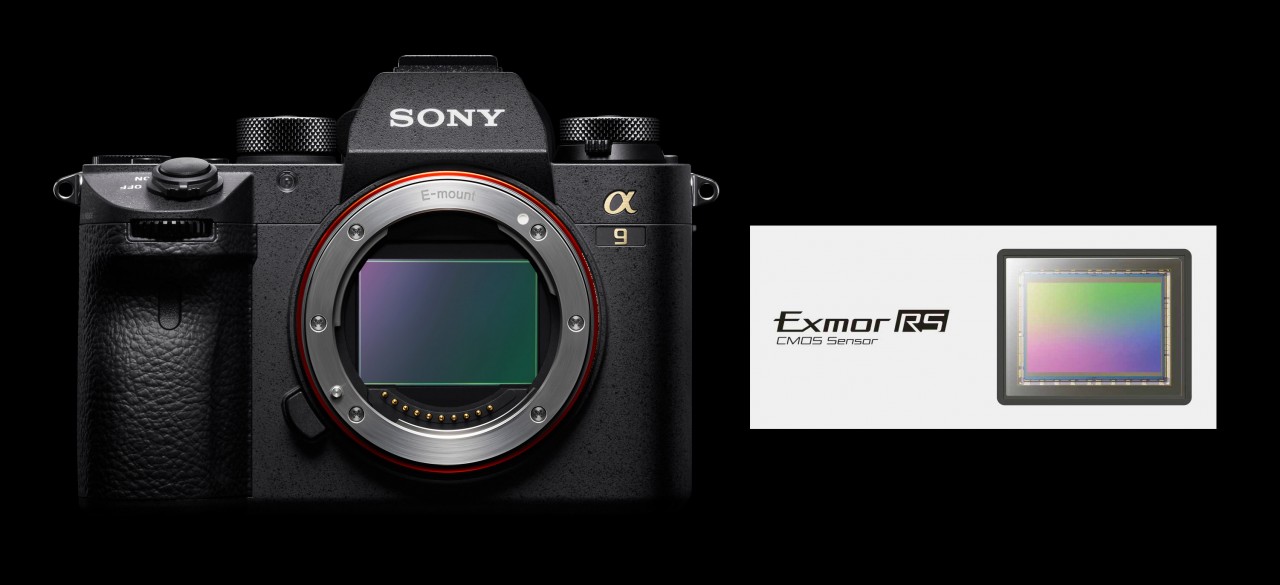Announcements, Blog, E-Mount Cameras
Sony’s Stacked CMOS Sensors – The Dawn of the Electronic Age
The announcement of the Sony α9 has caused quite disturbance in the force for many photographers. For Sony to suggest the performance of its electronic shutters have now surpassed the performance of mechanical shutters should remain a talking points for many months to come. This is more than just a camera company claiming that their latest new camera is the best thing sliced bread (which for some sports photographer may just be the case). The Sony engineers who have been developing the revolutionary ‘Stacked’ CMOS sensors to be found in the Pro α9 camera (and the latest consumer RX cameras) have been pulling proverbial rabbits out of the proverbial hats for a few years now – the impacts of which will change Photography – forever.

Let’s not forget to look at the bigger picture with the announcement of the α9. The α9 Pro camera may be out of the reach of the pockets of most photographers, but photographers have had access to this technology for some time with the RX100IV/RX100V and RX10II/RXIII cameras. The capabilities we attribute to the electronic shutter of the α9 and RX cameras will eventually trickle down, and up, to the interchangeable lens cameras that most of us are now using – including entry level APS-C cameras. We will soon see distortion-free full electronic shutters that allow incredible frame rates (with zero viewfinder blackout) in all Sony Alpha cameras. This is largely down to the Stacked CMOS sensors Sony have been gradually developing over the last few years. It is these newly developed stacked sensors with DRAM that delivers ultra-fast data readout speeds (up to 20x faster) that now makes it possible to capture still images of fast-moving subjects with minimal focal plane distortion. Lets all welcome the Exmor RS CMOS sensor.

Fully electronic shutters are not new – many cameras, including the Interchangeable Lens α7 cameras, already have them. I can shoot in ‘Silent Mode’ on my α6500 or α7RII cameras, which uses a full electronic shutter rather than the mechanical shutter, in the regular shooting modes. I cannot, however, shoot in Continuous mode when using Silent Shutter on the A7RII camera and only Continuous Lo (3 fps) on the A6500. If I attempt to capture something that is moving rapidly I will also experience ‘shutter distortion’. Although I am able to select a fast shutter speed when using the electronic shutter on my α7RII or α6500 cameras, the ‘traverse’ time taken to take the data from the sensor may be as long as 1/15 second (think of the time that a flatbed scanner or photocopier takes to scan your document – it is never scanning the same section for very long, but it takes a while to pass over or ‘traverse’ the entire document). When shooting subjects that are not moving, or moving slowly, this does not present a problem for a fully electronic shutter.
For sports photographers the thought of using an electronic shutter has previously not been an option. A combination of a fast moving subject, fast shutter speed and slow ‘traverse’ times results in an image like the one of the golfer (top-left). Each part of the fast moving golf-club is sharp (courtesy of the fast camera shutter speed selected) but as the lower portion of the sensor is being read a little later than the upper portion of the sensor, the golf club appears to bend as if it were part of a Salvador Dali surreal painting. The image on the right was captured with Sony’s new α9 camera and clearly shows that the traverse speed and the speed of the electronic shutter are now much more closely aligned – similar to what we would expect to see if the image had been captured using a conventional mechanical shutter found in either a DSLR or Mirrorless camera. Although the a9 is the first full-frame camera to feature a Stacked CMOS sensor it is important to remember that these sensors first appears in the RX100IV and RX10 cameras. The RX100V can now shoot 20 Megapixel Raw files at 24 frames per second (that’s the same frame rate that Hollywood shoots its movies)!

Capturing images with no blackout
The advantages of using a fully electric shutter rather than a mechanical one are deep reaching. With zero viewfinder blackout we can track a fast moving subject much more easily and also perfectly time a decisive moment or just blast the decisive moment and pick the moment in post. The electronic shutter means that a shutter sound is optional and when silent we are less likely to disturb the scene we are capturing. The lack of vibration from the absence of a mechanical shutter will also lead to sharper images.
An overview of Sony’s vision for their Alpha cameras
In 2006 Sony released the α100 – their first Alpha camera. It’s design owed much to Konica/Minolta – Sony’s entry point into the interchangeable lens camera market. Although the α100 was a typical DSLR of its era, it did have a point of difference, namely the In-Camera Sensor Stabilisation (Steadyshot Inside). The sensors that Sony were already making for other companies now found a home in a Sony branded camera (the CCD sensor in the Sony α100 was the same one that was found in the Nikon D200). By the following year Sony had released the α700 camera featuring an Exmor CMOS sensor instead of its older CCD technologies. Sony’s α33, that was released in 2010, dispensed with the Single Lens Reflex mirror, using a fixed ‘Transulcent’ mirror instead. This bold move removed the problem of a reflex mirror blocking the continuous path of light to the sensor. The use of a translucent mirror meant establishing the EVF and SLT technologies. This started the process of clearing the way for the new sensors that would follow – the immediate benefit was to allow Contrast Detect Autofocus in Movie mode (AF was disabled in DSLRs when the mirror was up). A lot of camera reviewers at this time could only think to compare optical viewfinders with electric viewfinders, without being able to glimpse where Sony may be taking us in the years to come.
On-Sensor Phase-Detect AF (PDAF) appeared in 2012 with the release of the α99. At this stage it was supplemented by traditional phase detect AF in the mirrorbox of the camera, so a lot of the press failed to see the significance of the sensor developments Sony were working on at this time. The implementation of very fast on-sensor phase-detect AF in 2014 (Sony A6000) meant that Sony could now drive its mirrorless technologies to directly compete with the best DSLR cameras. Sony was also now creating sensors that were over-engineered for companies buying their sensors for use in their DSLRs, e.g. Nikon still use the Phase Detect in their mirror boxes so have little use for the on-sensor phase-detect AF of sensors being used in the α7RII and α6K cameras. Perhaps this is why we haven’t seen the 42.4 Megapixel sensor of the α7RII appear in a Nikon body. Now that Sony has worked out a way to dispense with the mirror, and the associated phase-detect AF in the mirror box, they are now free to drive their mirrorless technologies even faster – which is what we are seeing today. With the release of the α9, its the turn of the mechanical shutter mechanism to come into the firing line and again this is being driven by developments in the sensor and not the camera body. It’s now 10 years since we saw an Exmor CMOS sensor appear in an Alpha body, so a lot has been achieved in a relatively short time. If you compare Sony’s development of imaging technologies with companies that have invested their R&D into DSLR technologies, the speed of development is astonishing. Traditional DSLRs have higher resolution and are a little faster than they were 10 years ago while the Sony α9 has turned camera design upside down and inside out. I suppose its just a matter of time before we see a ‘global shutter’* that can be synchronised to flash and then the mechanical shutter mechanism will disappear from the camera body altogether. How long are we away from seeing this? Only time will tell. Will Sony share its Sensors with all the other companies or just some. We can only guess.
Note > Shutters are either Global or Rolling. There are advantages and disadvantages to each. If Sony iron out the disadvantages of global shutters for stills imaging and movies then that is where we will be heading. Here is an article that explains the differences: *https://www.qimaging.com/ccdorscmos/pdfs/RollingvsGlobalShutter.pdf

Pingback: Sony announces the new A9 full-frame E-Mount camera and FE 100-400 F4.5/5.6 GM OSS Lens | Mark Galer
Pingback: Sony A9 Review (Extended) - Mark Galer
Pingback: My 'Sony Alpha Product of the Year' Award - Mark Galer